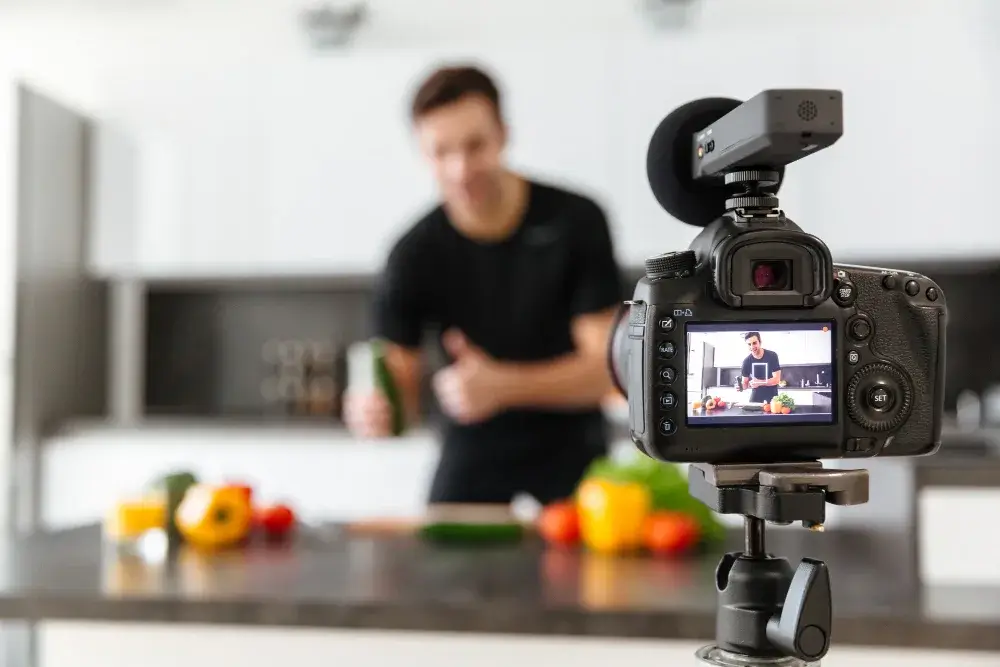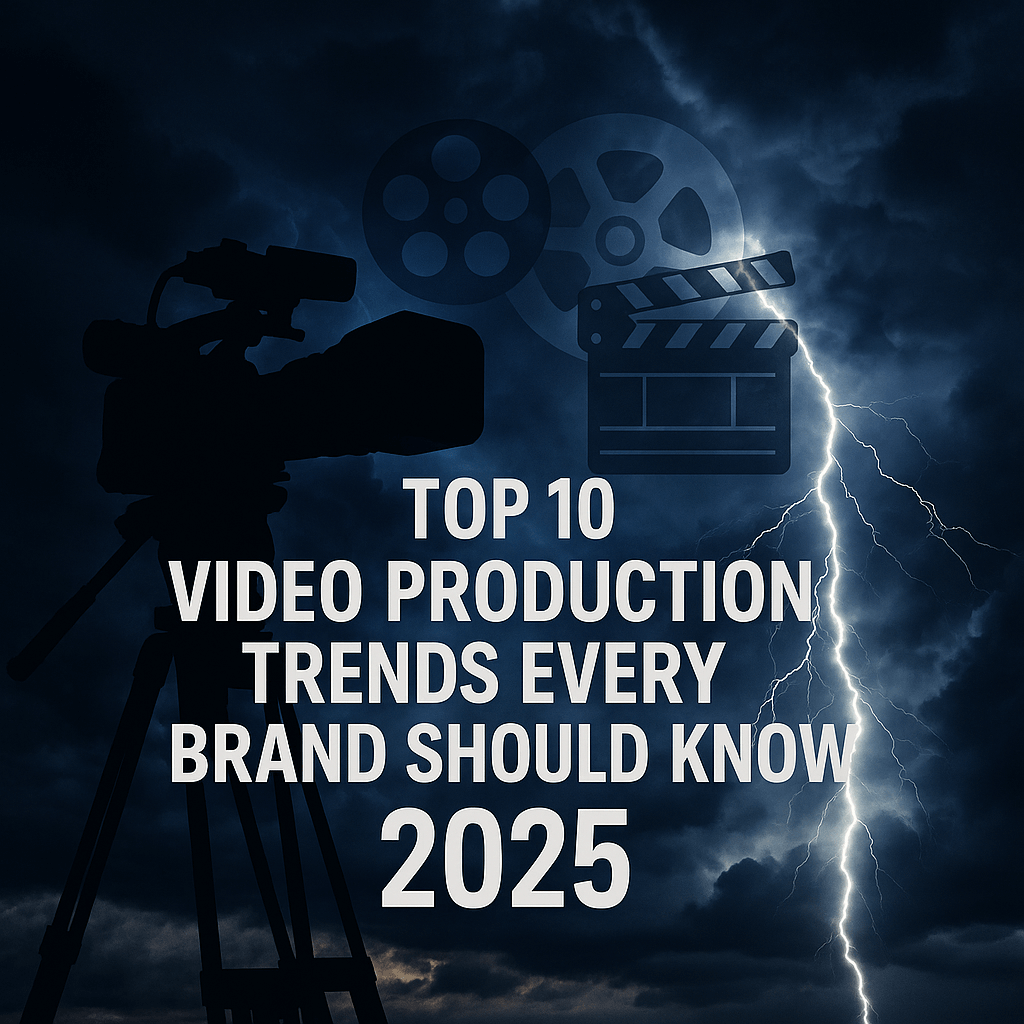Video is no longer just a marketing tool, it’s the medium driving brand perception, product engagement, and customer decision-making in 2025. With 91% of businesses now using video as a marketing tool (Wyzowl, 2024), the pressure to choose the right type of video is higher than ever.
But when it comes to product video vs. commercial ad, many brands find themselves stuck. Do you focus on detailed demonstrations that showcase functionality, or should you invest in cinematic storytelling that builds emotional resonance?
The answer lies in understanding the role, intent, and platform for each. One drives conversions with clarity; the other ignites brand loyalty through emotion. Making the right choice can directly impact ROI, click-through rate, and overall brand recognition.
cinematic video production company
What Is a Product Video?
A product video is a content format created to explain or highlight the features, benefits, and functionality of a product. It’s direct, information-dense, and action-oriented, perfect for guiding potential customers toward a purchase decision.
Where it’s used:
- Product detail pages
- Amazon listings
- Shopify or ecommerce landing pages
- Email campaigns
- Retargeting ads
Key Features of Product Videos:
- Clear close-up visuals of the product in use
- On-screen text or voiceover to highlight specs
- Feature lists, size, color, or compatibility details
- May include unboxing, how-tos, or use-case demonstrations
Product videos are essential to product video production strategies when your goal is to reduce friction in the buying journey. They support decision-making and eliminate guesswork, particularly for tactile or complex items.
Example Use Case:
Skystorm’s product video for a smart home thermostat demonstrates its interface, installation steps, and mobile app integration, all within 60 seconds. A 28% uplift in conversions for their client.
Read more: Why 4K Video Production Isn’t Just for TVs
What Is a Commercial Video Ad?
A commercial video ad is a high-level marketing asset crafted to boost brand awareness and emotional connection. These are the ads you see on YouTube pre-rolls, Meta Ads, streaming platforms, and TV, they’re polished, cinematic, and often memorable.
Where it lives:
- Broadcast TV
- YouTube or pre-roll ads
- Instagram/Facebook reels
- OTT platforms like Hulu or Roku
- Digital Out-of-Home (DOOH) screens
Key Features of Commercial Ads:
- Storytelling-driven content with emotional resonance
- Hero imagery, cinematic lighting, and stylized pacing
- Often includes branded slogans and taglines
- Strong call to action (CTA) for brand recall
Great commercial video examples emotionally engage audiences. They rarely dive into product specs. Instead, they focus on lifestyle alignment and aspirational messaging, especially effective for B2C campaigns.
Example Use Case:
A Skystorm client in the wellness industry used a commercial video ad to position their product as part of a lifestyle transformation. Instead of listing features, the video followed a real person’s morning routine with the product subtly integrated, leading to a 3X increase in ad recall and video shares.
Read more: Orlando Video Production Studio | Skystorm In-House Studio Now Complete
Side-by-Side Comparison Table
| Feature | Product Video | Commercial Ad |
| Goal | Educate & Convert | Inspire & Attract |
| Format | Short, Factual | Story-Driven, Cinematic |
| Use Case | Ecommerce, Product Demos | Brand Campaigns, Awareness |
| Length | 30–90 seconds | 15–60 seconds |
| Cost | Lower | Higher (cinematic production) |
| CTA Style | “Buy Now,” “Learn More” | “Follow Us,” “Join the Movement” |
When to Choose a Product Video
If you sell online or DTC, your customers often rely on visuals to make purchasing decisions. That’s where product video production becomes indispensable.
Ideal Scenarios:
- New Product Launch: Capture interest with specs and features upfront.
- Ecommerce Conversions: A video showing real-world use can boost cart conversions by over 80%.
- Complex Products: If the buyer needs to understand how it works before buying.
- Landing Pages & Retargeting Ads: Short explainer videos re-engage interested users.
Pro Tip: Product videos with minimal fluff and a strong “buy now” CTA reduce bounce rate and boost engagement time on product pages.
When to Choose a Commercial Ad
For top-of-funnel engagement and brand storytelling, a commercial video production strategy is more effective. These videos aim to make an impression, even when the viewer isn’t looking to buy immediately.
Ideal Scenarios:
- Brand Awareness Campaigns: Build a consistent image across platforms.
- Major Launches or PR Events: Generate buzz with storytelling and emotion.
- Streaming and OTT Ads: Compete in high-attention spaces like Hulu or YouTube.
- Emotional Branding: Forge a connection by tying your brand to values, stories, or aspirations.
Example:
A footwear company collaborated with Skystorm to create a 30-second ad showing an athlete’s journey, without ever directly showing the shoes. The emotional journey alone generated over 5 million views organically.
Read more: Top 10 Video Production Trends Every Brand Should Know in 2025
Can You Use Both? (Smart Brands Do)
Absolutely. Leading brands invest in a video marketing strategy for businesses that integrates both formats strategically.
Here’s how:
- Use Commercial Ads for awareness and reach (top-of-funnel)
- Use Product Videos for conversion on product pages or retargeting (bottom-of-funnel)
Together, they form a full-funnel video experience that aligns with customer intent at each stage.
Example Strategy:
A commercial ad tells your brand story on YouTube. Once the user clicks or engages, they’re retargeted with a product demo video on Instagram or via email. It’s a seamless path from emotion to transaction.
Real-World Examples
- Apple AirPods Product Video: A sleek 60-second clip highlighting touch controls, spatial audio, and battery life. Simple, clean, direct.
- Nike Commercial Ad (You Can’t Stop Us): A powerful emotional video featuring split-screen athletes overcoming challenges, culminating in a unifying brand message.
- Skystorm Portfolio Highlight: Check out Skystorm’s video production work here to see examples across both formats.
Conclusion: Choose Based on Strategy, Not Just Aesthetics
There’s no universal winner in the product video vs. commercial ad debate. Your decision should stem from your marketing goals, audience intent, and sales funnel position.
- Use product videos for clarity and conversion.
- Use commercial ads to build emotion and brand presence.
- Use both for a full-funnel approach that moves prospects from awareness to action.
Book a free video strategy call with Skystorm or explore our latest work to see what’s possible.
FAQ
What is the difference between a product video and a commercial ad?
A product video focuses on showing how a product works, typically used on ecommerce sites or product pages. A commercial ad is designed to build brand awareness with storytelling, often used on YouTube or TV.
Is a product video better for ecommerce?
Yes. Product videos help potential buyers understand features, benefits, and use cases, boosting conversions and reducing returns.
Can I use the same video for ads and product pages?
Technically yes, but it’s not recommended. Ads need emotional hooks and brevity, while product pages require clarity, features, and functionality.
How much does product video production cost?
Costs vary based on complexity, length, and visual effects, but a typical high-quality product video may range from $3,000–$10,000 depending on the studio.
What makes a great commercial video example?
Great commercial ads are emotionally compelling, professionally shot, have strong storytelling, and end with a clear, brand-aligned call to action.



